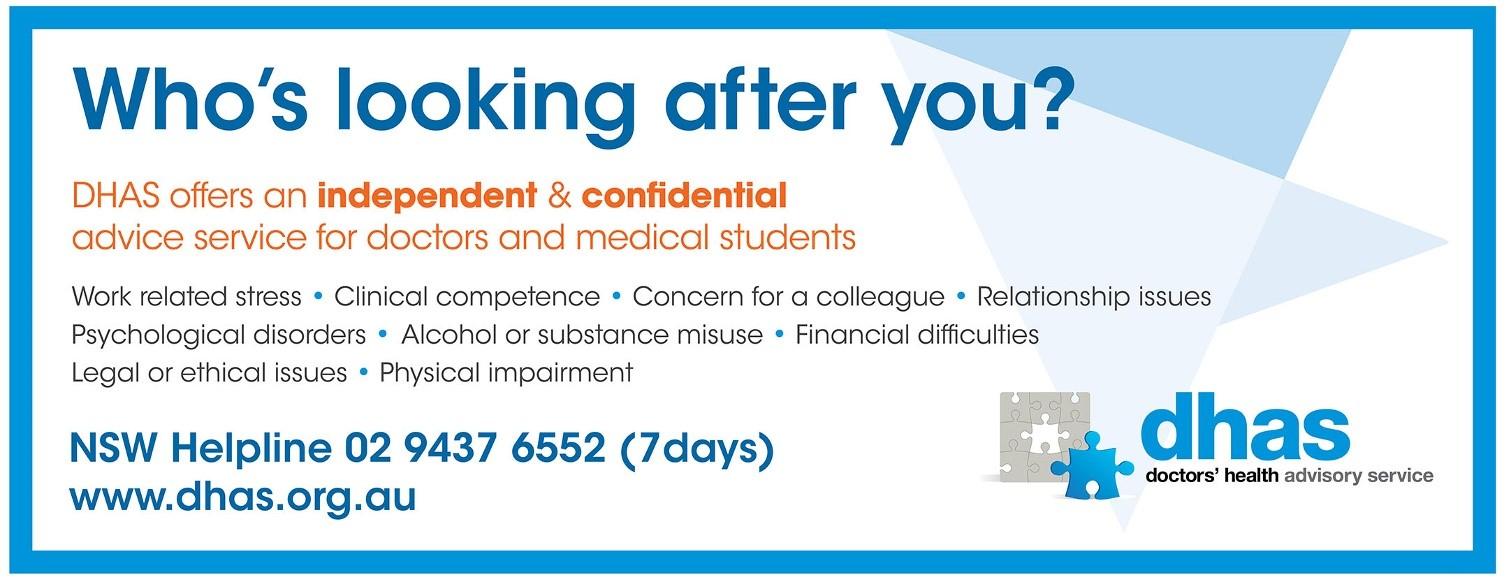BoardTalk
President’s Report
The previous few years have certainly presented novel and unexpected challenges to our profession.
Through our training we have been prepared for exotic disease outbreaks and emerging infectious diseases and our profession has an outstanding record of managing threats like Hendra and eradicating exotic diseases such as equine influenza through working collaboratively.
As I write this we are faced with an outbreak of Foot and Mouth Disease on our border. Many of our colleagues are working diligently to ensure it remains an exotic disease.
What we were less prepared for was the emerging human infectious disease COVID 19 and especially the unforeseen repercussions for our industry. Initially many of us anticipated lockdowns would have a negative impact on our industry however it quickly became clear that demand for our services exploded.
The price of new puppies went through the roof, demand for veterinary services increased and workforce shortages have become more acute and severe and exacerbated by closed borders. More recently as we open up and learn to live with COVID many veterinarians, including myself have become infected. This has exacerbated workforce shortages in many practices and increased the stressors we all work under.
Our clients have increasingly higher expectations of veterinarians driven by the availability of specialist and 24 hour emergency care, social media and Dr Google. It also appears that when expectations are not met clients are becoming more vocal. Negative social media reviews can have a devastating impact on practices and individual veterinarians. Abuse from clients in the waiting room and online is becoming all too common.
These problems are not unique to our profession but unlike the local restaurant, veterinarians are also threatened by clients with “being taken to the Board”. Continued p. 20
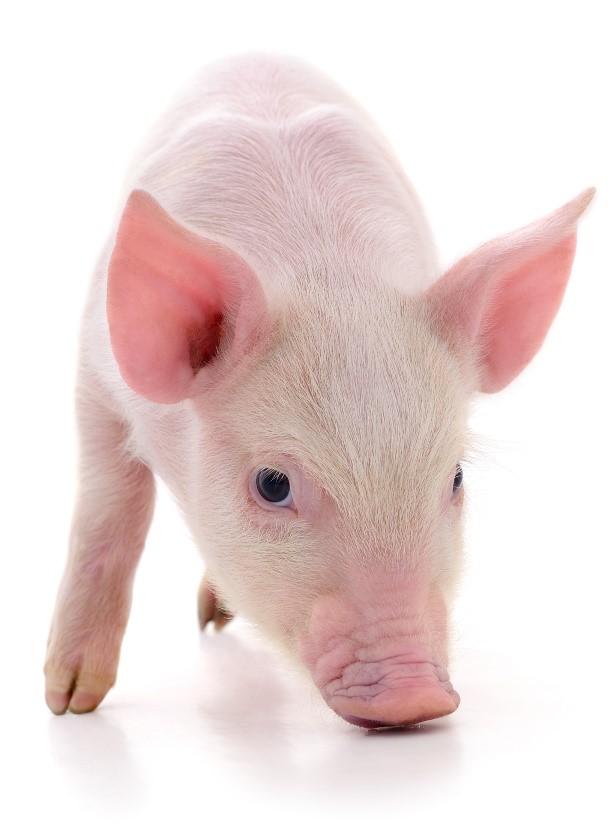
Registration and licence renewals are due
Please ensure you renew your veterinary registration and hospital licence by 30 June.
Registration renewal requires both payment of the registration renewal fee of $320 and submission of the Annual Return. Both can be completed using your Vet Login and if you experience any difficulties please call or email the office.
A late fee of $55 applies to registrations renewed after 30 June and if you have not renewed by 14 July your name will be removed from the Register. Restoration to the Register in these circumstances will incur an additional fee equal to the registration fee. Don’t be late!
Inside this issue
Complaint statistics 2
Complaints Committee 4 Hospital Inspections 6 Pain relief 7
Inducements 8
Access to medications 9
Abandoned animals 10 Records 11
Confidentiality .....................12 NSW DPI 14
APVMA 18 NSW OLG 19
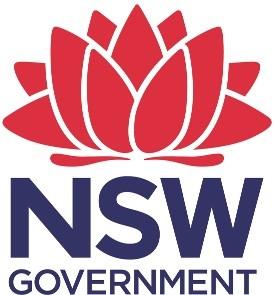
Please help with these surveys
• Australian canine snakebites
• Feline lower urinary tract signs
• Barriers to BOAS treatment
• Veterinary nurse registration
Registration renewals
Registration renewals must be completed by 30 June 2022 for the registration period 1 July 2022 to 30 June 2023.
The registration fee is $320.
If you have not yet received your registration renewal notice by email please contact the Board
The easiest way to renew your registration is to use the Vet Login If you do not yet have a Vet Login click on the Forgotten your password link from the Vet Login page and details will be sent to your registered email address.
If you no longer have access to your registered email address please contact the Board
Problem submitting?
Please enter zero ‘0’ if you have not completed structured or unstructured CPD.
Ensure your work address includes ‘state’ details.
Complaints summary statistics
From 2006 to 2021 the number of complaints received by the Board increased at a rate of around 9% per annum (Figure 1). During the same period, the number of registered veterinarians has been increasing at a rate of around 3% per annum.
Figure 1 Number of complaints to the Board by calendar year 2006 2021
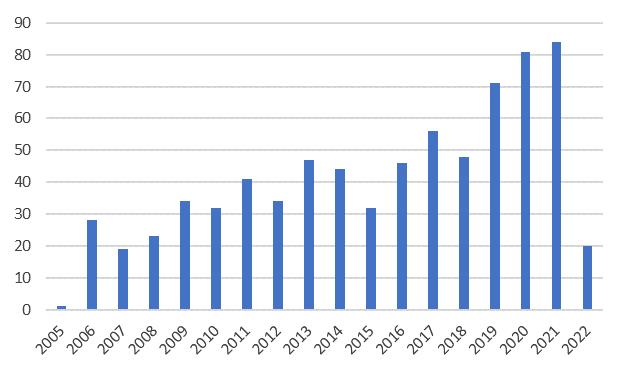
As detailed in the Annual Report, for the financial year ending 30 June 2021, the Board received 83 new complaints and finalised 80 complaints involving 110 veterinarians. Of the 4,126 veterinarians on the register, approximately 3,100 work in either general or specialist clinical practice. Based on these numbers the likelihood of a veterinarian being the subject of a complaint in NSW is approximately 3.5% or around 1:30.
Whilst 60% of the profession is female, the majority of complaints (60%) are against male veterinarians. The average age of a veterinarian the subject of a complaint is 52 years and the average age of a veterinarian on the register is 45 years. Similarly, the average number of years after graduation for a veterinarian receiving a complaint is 28 years whilst the average veterinarian on the register qualified 20 years ago (Figure 2).
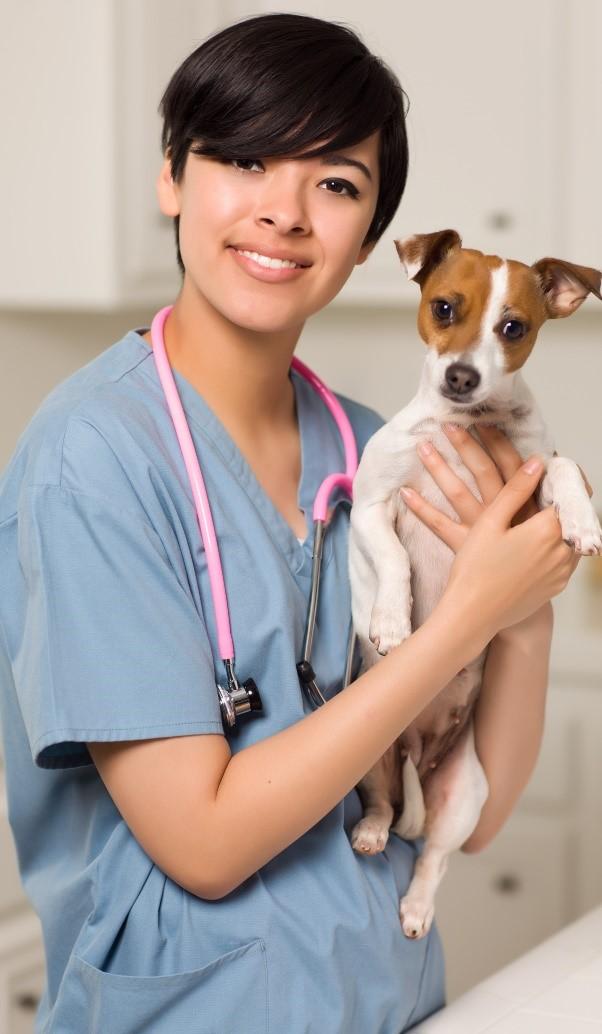
Figure 2 Average age and number of years graduated and gender for veterinarians receiving a complaint
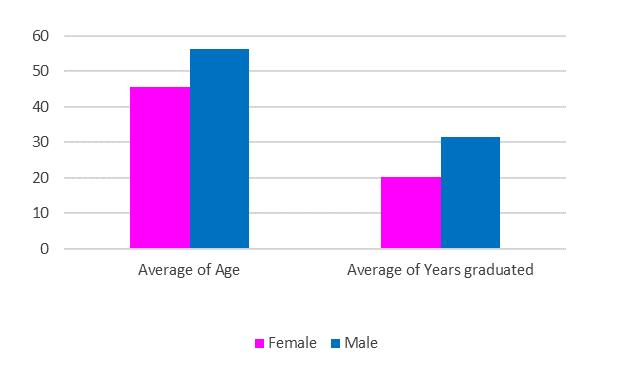
Clients express a range of grievances in complaints against veterinarians and when these result in adverse findings they are discussed in each issue of BoardTalk under the Complaints Committee Report. Common themes include maintaining current standards, consent, and record keeping.
As often cited, with many complaint investigations, an underlying theme of poor communication either between the veterinarian and the client or among veterinarians and staff emerges. The Board has also noticed a more recent theme where the expectations (likely extent, outcome and estimated cost of veterinary services) of referring veterinarian, client, and emergency veterinarian are poorly aligned.
For the financial year ending June 2021, 78% of complaints against veterinarians were dismissed and 18% of complaints resulted in an adverse finding against the veterinarian (4% were withdrawn by the complainant). The average age of a veterinarian receiving an adverse finding was 55 years (average 30 years after graduation).
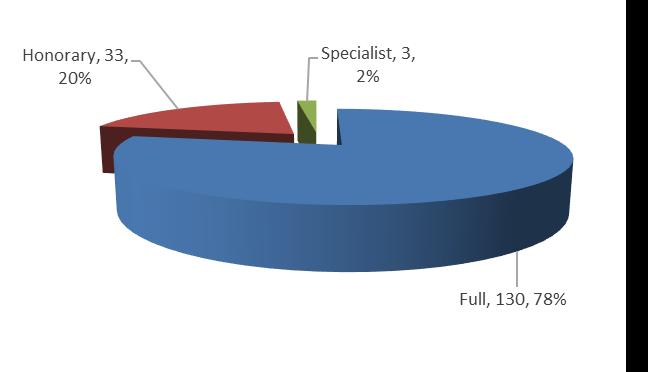
The Board has also noticed a more recent theme where the expectations (likely extent, outcome and estimated cost of veterinary services) of referring veterinarian, client, and emergency veterinarian are poorly aligned.
These data are also reflected in registration type. Veterinarians with honorary registration represent 8% of veterinarians but 13% of veterinarians the subject of a complaint and 20% of veterinarians receiving an adverse finding (Figure 3).
3 Adverse finding complaints by veterinarian registration type
The Board’s focus when making an adverse finding against a veterinarian is to determine if the primary issue was related to conduct, performance or health.
Research available from health regulators has suggested this is more likely to lead to better patient outcomes and a reduced incidence of repeat concerns. Conduct or behavioural issues generally require correction through some form of punishment (fines), performance through further education, and health through appropriate support (often through the placement of conditions).
The Board has the power to fine a veterinarian up to $5,000. The average fine over the last 5 years is around $800 but this has been falling by around 6% per annum.
Veterinarians who are the subject of a complaint may seek support from employers, colleagues, family, the Australian Veterinary Association, the Doctors’ Health Advisory Service, their professional indemnity insurer and more generic support services. The Board’s Complaints Officer is a trained counsellor able to provide support to both veterinarians and members of the public.
The Board continuously reviews feedback from veterinarians and complainants and examines the likelihood, issues, outcomes and support above with a view to improving its processes and achieving the object of improved animal welfare. Aligned with this purpose the Board has recently agreed to fund a PhD scholarship to research the epidemiology of complaints against veterinarians.
Veterinary nurse registration
The Sustainable Practice Committee (SPC) of the AVBC is investigating options for the registration of veterinary nurses in Australia.
Please assist this project by completing this online questionnaire.
It should take about 5 minutes.
Western Australia currently approves persons to perform specific duties prescribed for veterinary nurses (Veterinary Surgeons Regulations 1979 (reg 65)) and will soon become the first jurisdiction to register veterinary nurses.
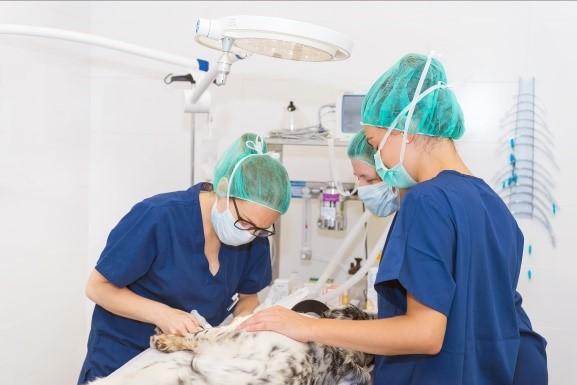
Protecting the title ‘veterinary nurse’ by defining it in legislation and linking this definition to a regulatory authority may create a simple, national system for regulation of veterinary nurses.
For further information on this project an options paper is available.
Please help move this discussion forward by recommending all staff complete this questionnaire.
 Figure
Figure
Complaints Committee Report
The Board reviewed and determined 40 new complaints made against 50 veterinarians between November 2021 and April 2022. These numbers are a decrease of 18.4% from the last reporting period.
Of the 40 new complaints considered, 29 were dismissed and one was withdrawn. A further four complaints were dismissed by the Board under section 46 of the Veterinary Practice Act 2003 (Act)
Unsatisfactory professional conduct
The Board found five veterinarians guilty of unsatisfactory professional conduct (UPC) in the latest reporting period.
Lack
of adequate knowledge, skill, judgment or care
A veterinarian was issued with a caution and a requirement to complete CPD after failing to investigate a coagulopathy as the cause of post operative bleeding in a dog following an ovariohysterectomy procedure.
The dog returned to the hospital only a few hours after discharge as a swelling had developed at her incision site.
The treating veterinarian elected to perform an exploratory laparotomy to investigate the possibility of a slipped ligature. During surgery it was noted that there was an unusual amount of bleeding between the layers of tissue as the abdomen was re opened and a large volume of blood in the abdominal cavity.
Of the 40 new complaints considered, 29 were dismissed and one was withdrawn. A further four complaints were dismissed by the Board under the Veterinary Practice Act 2003 (Act) (s 46).
The cause of the dog’s bleeding could not be identified during surgery.
Consequences of a breach
Where a veterinarian is found guilty of UPC or PM, the Board may issue a caution, reprimand, fine or impose conditions on their registration.
During this reporting period, three of the five veterinarians found guilty of UPC were issued with cautions and had conditions placed on their registration.
One veterinarian found guilty of UPC was fined $1500. This veterinarian had failed to respond to a previous caution in relation to inadequate records.
A veterinarian found guilty of PM was reprimanded and fined $500. This veterinarian had already been fined by another regulator.
The veterinarian failed to offer or perform clotting time testing prior to or after surgery. Other causes of bleeding were not subsequently investigated and empirical treatment for treatable coagulopathy was not offered or provided.
The Board was of the opinion that the veterinarian should have considered rodenticide poisoning as a leading possible cause of coagulopathy which may not have become apparent until surgery was performed. The veterinarian submitted that they considered rodenticide poisoning as a possible cause of bleeding in this case, but the Board determined that the veterinarian did not then act appropriately on this suspicion. The dog died two days after her spey.
A second veterinarian was found guilty of UPC and issued with a caution and a requirement to provide evidence of completion of relevant CPD to the Board after failing to correctly interpret radiographs in a dog that was known to have aspirated intra operatively.
The dog was discharged with oral antibiotics even though radiographs performed post operatively showed evidence of aspiration pneumonia. The veterinarian failed to recognize the risk that chemical injury from the aspiration event posed to the patient. The dog died two days later.
The Board acknowledged that aspiration pneumonia can be fatal even with intensive veterinary care. The veterinarian admitted their mistake, proactively committed to continuing education by enrolling in an imaging course and the veterinary practice had introduced protocols and staff training to minimize the chance of a similar error occurring in the future.
A third veterinarian was found guilty of UPC and issued with a caution for prescribing non steroidal topical eye drops in a case of bilateral indolent corneal ulcers or Spontaneous Chronic Corneal Epithelial Defects (SCCED).
The veterinarian acknowledged their error and lack of knowledge about the detrimental effect (delayed healing) such medications may cause in SCCED cases as well as the need to undertake further education in this area.
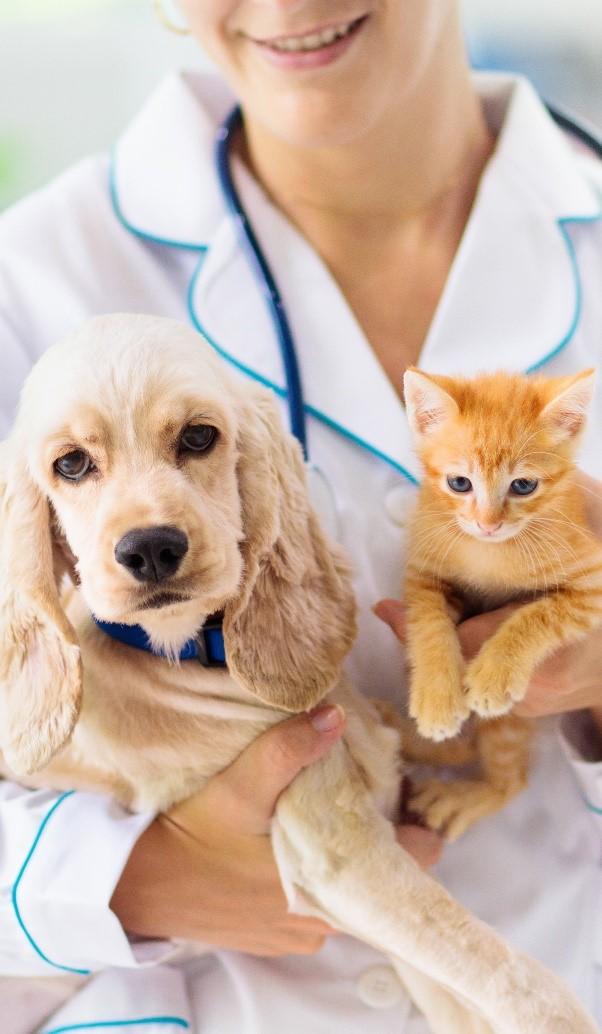
Unsatisfactory professional conduct (cont
Current standards
A veterinarian was found guilty of UPC and issued with a caution and fine of $1500 in relation to their treatment of a large breed dog that required a cruciate repair.
The veterinarian diagnosed a partial cranial cruciate ligament rupture by palpation and subsequently performed an extra capsular repair technique. No pre operative radiographs were performed.
The Board was of the view that the veterinarian also provided inappropriate antibiotics (Convenia and a single dose of injectable gentamicin) for an orthopaedic procedure. The veterinarian was unable to provide acceptable references to support this choice of antibiotics when requested and failed to justify the use of the chosen antibiotics.
It was the Board’s opinion that if antibiotics were to be provided, a first generation cephalosporin would have been a more appropriate choice.
The surgical site became infected post operatively. The client attempted to contact the veterinarian to report their concerns but did not hear back in a timely manner. The dog was taken to another veterinary hospital for re assessment and revision surgery.
The original veterinarian did not share the dog’s medical record with the other veterinary hospital when requested to do so in breach of the Code.
The dog’s medical record also did not meet the requirements of the Code in that it did not contain sufficient detail to enable another veterinarian to continue the dog’s care.
Likely extent and outcome of treatment
A veterinarian was found guilty of UPC for failing to provide an estimate of fees prior to a warm water enema (Code (cl 16)).
The client stated that because no estimate was provided, they did not understand the extent of the veterinary treatment to be provided (i.e., that the procedure conducted involved general anaesthesia).
The client submitted that if an estimate had been provided, it would have triggered a conversation about the nature of the proposed treatment and risks involved, but this did not occur.
The patient’s bowel was accidentally perforated during the enema, and she died the next day despite appropriate efforts to repair the perforation and treatment for septic peritonitis.
Professional misconduct
A veterinarian was found guilty of professional misconduct and reprimanded due to multiple breaches:
a. The order under the Stock Medicines Act 1989 prohibiting a veterinarian from supplying an injectable anabolic steroid
b. The Rules of Racing of Racing NSW and therefore the Code (cl 14)) for dispensing an injectable anabolic steroid to a Thoroughbred horse trainer.
c. The Code (cl 15) for failure to create a clinical record in sufficient detail to allow another veterinarian to continue the treatment of the animal.
It was further noted that the order prohibiting the dispensing of injectable anabolic steroids came into force in 1989 and the change to the Rules of Racing prohibiting the use of anabolic steroids was announced in 2014.
Whilst professional misconduct is defined as conduct more serious than unsatisfactory professional conduct, the fine imposed was only $500 as the veterinarian had previously been punished by another regulatory authority for the first two of the above breaches.
Health Program
An impairment is defined in the Veterinary Practice Act 2003 (s 4 (3)) as any physical or mental impairment, disability, condition or disorder which detrimentally affects or is likely to detrimentally affect the person’s physical or mental capacity to practise veterinary science.
The Board appreciates the difficulties faced by a veterinarian suffering from an impairment and is committed to assisting these veterinarians through the establishment of its Health Program for Veterinarians
The goal of this program is to enable veterinarians to work their way through their health issues with the support of suitably qualified professionals and the Board.
The Board has adopted the procedures outlined in the Doctors’ Health Program provided by the Medical Council of NSW to achieve this goal.
Importantly, it is the Board’s preference that issues of impairment or possible impairment are addressed outside of the Board’s complaints processes and disciplinary powers where possible.
The Board also appreciates that stressors associated with the performance of the professional duties of a veterinarian may also be increased during a complaint investigation process.
Hospital licence renewals
Hospital licence renewals must be completed by 30 June 2022 for the registration period 1 July 2022 to 30 June 2023.
The licence fee is $370.
Renewal notices are generally sent to the licence holder(s) or an accounts contact provided to the Board.
If you have not yet received your hospital licence renewal notice by email please contact the Board
You can renew your licence either by using your Vet Login or by going to our payments page and entering your hospital licence number.
If you do not yet have a Vet Login click on the Forgotten your password link from the Vet Login page and details will be sent to your registered email address.
Hospital Inspections Report
Hospital inspections have been delayed in recent months due to COVID 19 and floods but will resume shortly.
The inspection process remains similar to previous years and consists of the following steps:
1. The superintendent is contacted at least 7 days prior to inspection to arrange an appointment
2. The self assessment checklist for hospital superintendents should be completed prior to the inspection
3. The inspection focuses on items in the checklist with any issues identified, and a timeline for addressing these issues agreed upon
4. Follow up confirmation of the inspection and issues to be addressed where applicable.
Licence transfers
Just as veterinarians are required to update their knowledge and skills to reflect current standards of veterinary practice, the minimum standards for veterinary hospitals expected by both the Board and the general public change over time.
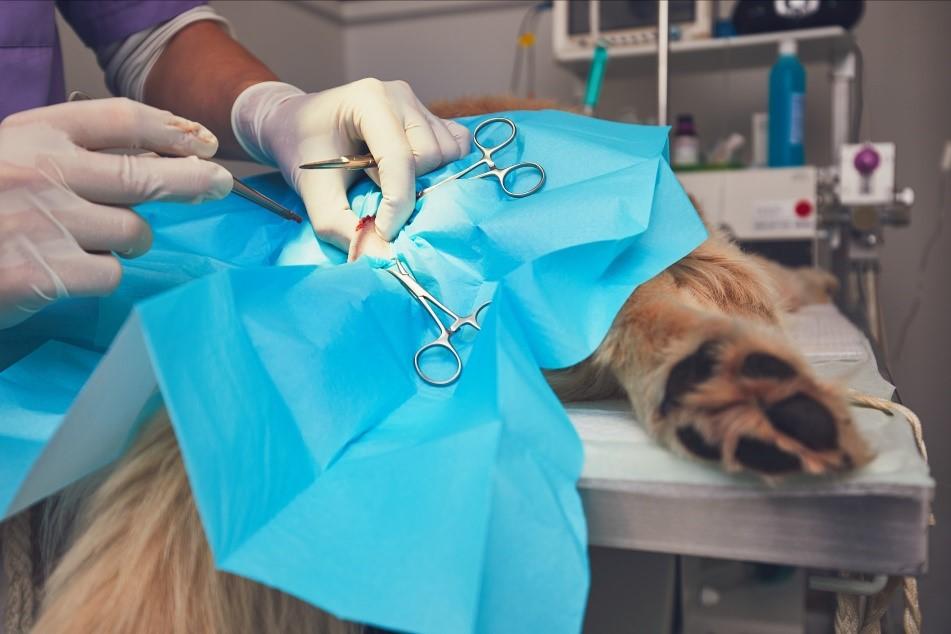
The Board encourages all veterinary hospital licence holders and superintendents to review the minimum requirements for veterinary hospitals guideline to ensure their premises are maintaining levels of facilities and equipment expected, and reviewing and continuously improving processes.
There are two mechanisms for the Board to review current premises:
1. Inspections
2. Licence
transfers
In addition to the inspection program above and unannounced inspections, the Board reviews the current hospital plans when processing hospital licence transfers
When purchasing a veterinary hospital, or transferring a hospital licence, the Board encourages veterinarians to review the minimum requirements document and self assessment checklist to determine whether the premises are meeting current requirements. Any suspected deficiencies can then be discussed with the current licence holders prior to purchase. Any questions can be posed to the Hospital Inspector or other Board staff.
If a hospital is found to not be meeting minimum standards at the time of inspection or licence transfer, the Board may impose a condition on the licence holder to address deficiencies within a specific period of time.
If you are building or purchasing a hospital please also remember that a licence holder cannot be a trust. Only an individual veterinarian, partnership or company where one or more veterinarians have a controlling interest, or an exempt body under the Act (s 14(5)) can be a licence holder.

Pain relief for routine animal husbandry procedures

The Veterinary Practitioners Code of Professional Conduct (Code (cl 20)) requires that a veterinarian must only supply a restricted substance (S4 or S8 medication) under the following circumstances:
(a) to a person responsible for the care of an animal that the veterinary practitioner has physically examined or has under his or her direct care, and only in respect of that animal, or
(b) to a person responsible for the care of an animal, with the written authority of another veterinary practitioner who has physically examined the animal concerned or has it under his or her direct care, and only in respect of that animal.
With respect to ‘under his or her direct care’ the Board has previously noted that this inclusion by the legislators enables a veterinarian to physically examine a representative sample of animals on a property, establish a diagnosis and then supply a restricted substance for other animals within that herd or flock (i.e. animals which the veterinarian has not physically examined).
The Code (cl 4) requires that the establishment of a diagnosis is in accordance with current standards and this aligns with the requirement for a physical examination prior to the supply of a restricted substance.

The Board appreciates that the performance of routine animal husbandry procedures by animal owners and carers does not involve the diagnosis of a physiological or pathological condition and this creates a second option for supply of a restricted substance to an animal under his or her direct care.
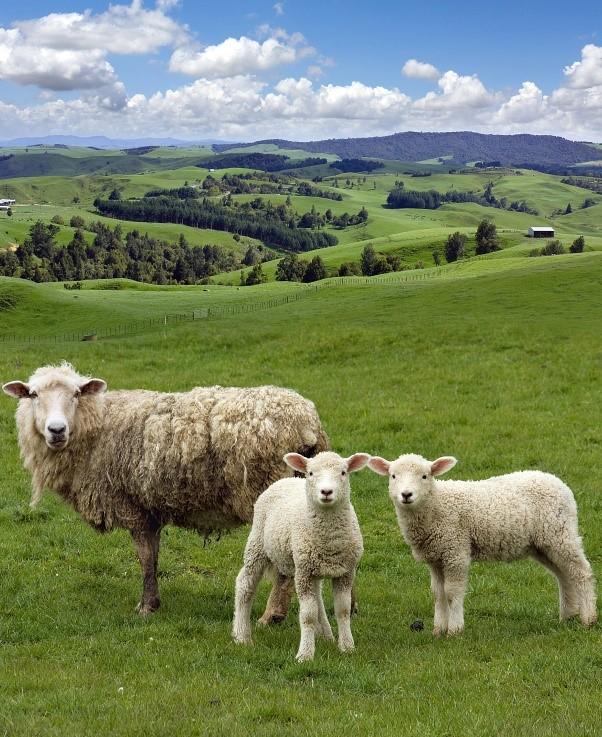
Given the importance of pain relief for animals in these circumstances, the Board has revised its Guideline on the supply of pain management medication for animal husbandry procedures in production animals to provide for repeat supply of such medication using a technology based patient consultation.

The Board stresses that this supply of a restricted substance is only for pain relief in production animals undergoing routine animal husbandry procedures and other obligations in accordance with the Code remain as noted in the technology based patient consultation guideline.
In summary, in order to supply a restricted substance (S4) for pain relief in animals undergoing routine animal husbandry procedures:
1. The veterinarian must have attended the property prior to any initial supply of pain management medication in order to establish sufficient knowledge in relation to the number, species, and conditions in which the animals are kept.
2. The veterinarian must be aware of the nature of the specific animal husbandry procedure and the number of animals to be treated
3. The medication supplied must be registered for this purpose in the species being treated and the medication and quantity supplied must be in accordance with current standards and specifically not in excess of that required for the number of animals being treated
4. Each individual container must be labelled in accordance with requirements under poisons and therapeutic goods legislation
5. The veterinarian must take reasonable steps to ensure the owner or carer has sufficient knowledge, skills and experience to administer the pain relief appropriately and safely
6. The veterinarian must ensure a record of this supply is maintained for at least 3 years and in sufficient detail to enable another veterinarian to continue the treatment of these animals.
7. Subsequent to the initial property visit, the supply of pain management medication beyond any given 12 month interval must be following either a property visit or suitable technology based consultation in accordance with veterinary practice and poisons and therapeutic goods legislation.
Under poisons and therapeutic goods legislation veterinarians are authorised to possess and supply restricted substances (S4 and S8 medication) for the treatment of animals. Clients and owners of animals may only have access to these medications if lawfully supplied by a veterinarian.
Australian Canine Snakebite Survey
Have you ever treated a dog with snake envenomation?
Here is your chance to contribute to our knowledge on this interesting topic!
It only takes 5 15 minutes.
Inducements
Inducements in their many forms are all around us. They are ubiquitous precisely because they are effective in changing behaviour or encouraging a course of action.
Although inducements such as Christmas hampers, event invitations or gifts are commonplace, any such transaction be it financial or non financial where there is a reasonable expectation of receipt or recurrence imposes a sense of psychological debt. This can subconsciously influence referral or prescribing practices.
Clause 21 of the Veterinary Practitioners Code of Professional Conduct (the Code) specifies that a veterinary practitioner must not provide a referral or recommendation, the request for which is accompanied by an inducement to the veterinary practitioner.
Financial inducements for a referral are not permitted and the Board has made a recent investigation because of a notification on this issue. If you make an offer which includes a financial benefit to another veterinarian in return for a referral or recommendation then you are in breach of the Code.
Clause 6 of the Code specifies that a veterinary practitioner must not mislead, deceive or behave in such a way as to have an adverse effect on the standing of any veterinary practitioner or the veterinary profession.
The University of Sydney is conducting an anonymous survey designed to investigate the current practices in the diagnosis and treatment of canine snakebite patients across Australia, with a focus on the number of vials of antivenom being used, the decision making surrounding this and any adverse events.
It is open to any veterinarian in Australia who has been involved with snake envenomation in dogs.
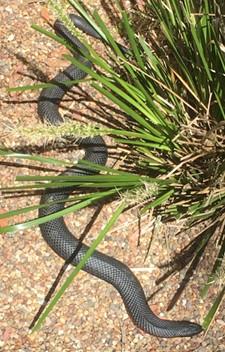
You may open the survey in your web browser by clicking the link below:
Australian Canine Snakebite Survey or type the link below into your web browser: https://redcap.sydney.edu.au/ surveys/?s=F4TFHL4CC3
Please consider forwarding this link to any colleagues who you feel may be able to participate.
Non financial inducements can also influence behaviour and thus remain a concern. If there is a perception that a course of action has been recommended because of the anticipation of reward, the integrity of the veterinary practitioner or the veterinary profession may be compromised.
There are several ways in which you can neutralise the impact of these from suppliers or other trade partners. One option is to refuse and return all gifts or offers of activity outside the professional sphere. If you do not wish to impose this, then a ceiling of modest financial value may be practical. Include this in your published organizational policy on gifts so that it is clear to all employees.
Other strategies include fully transparent sharing, throughout the practice staff, of all gifts received. This diffuses the personal obligation which may arise when gifts are directed to a specific decision maker. Donation of any gifts to a charity would also partly satisfy this objective, provided that the gift was not made in the name or on behalf of the intended recipient.
Protect your clinical independence by ensuring that you and your environment remain free from influence, in both word and in deed. The Board is legally bound by the legislation to investigate formal complaints and complaints can come from anyone, including consumers of veterinary services, veterinarians or the Board itself.

If the Board finds evidence of any breach of the Code, the Veterinary Practice Act 2003 or Veterinary Practice Regulation 2013, the veterinarian will be asked to justify their actions and a disciplinary finding against a veterinarian can be made.
Other helpful references to inducements are in BoardTalk December 2011 and December 2016

Doctors’ Health Advisory Service
The Doctors’ Health Advisory Service in NSW (DHAS) offers support and advice to doctors and medical students. In New South Wales, this service is also offered to veterinarians and veterinary students via a phone helpline.
At DHAS, we offer confidential and independent advice and we operate independently of all medical and veterinary professional organisations, including registration boards.
If you are a vet or veterinary student, we would encourage you to call the DHAS Helpline at any time if you think we can help you or a colleague.
Some calls to DHAS relate to mental health conditions, workplace stress, substance misuse and career concerns. Our on call doctors are nonjudgmental, empathetic and experienced.
When you phone the DHAS helpline, your call initially goes to an answering service and your phone number is relayed to the DHAS. The DHAS doctor on call will phone you as soon as possible, usually within a couple of hours. You do not need to leave your name, just a phone number to enable the return call.
We encourage all veterinarians and veterinary students to have a GP, and can assist you to find one in your local area.
Depending on the nature of your concern, the DHAS doctor may help you to access other relevant services and/or resources.
The DHAS helpline is not a crisis or emergency service in case of emergency callers are advised to phone 000.
DHAS HELPLINE (02) 9437 6552 www.dhas.org.au
Access to medications
Veterinarians are defined as authorised persons under poisons and therapeutic goods legislation. As an authorised person, a registered veterinarian is granted the authority under this legislation to access restricted substances (S4 and S8 medications) for the treatment of animals.
This authority allows veterinarians to purchase, supply or prescribe and access these substances within a veterinary practice.
Non veterinarians, including veterinary nurses, are only able to access restricted substances in two situations:
1. Under the direct supervision of a veterinarian
2. To treat animals with medications within the practice supplied by a veterinarian who has previously examined the animal.
Under the direct supervision of a veterinarian requires the veterinarian to be on premises. Hence, a non veterinarian is not able to supply a restricted substance to a client if a veterinarian is not present to provide that direct supervision and access.
Just as clients are supplied with medications to treat their animals, non veterinarians can similarly be supplied with medications by a veterinarian within a veterinary practice setting to treat animals in hospital when the veterinarian is not present.
Access to medications to treat animals is a privilege and a very significant factor which distinguishes a veterinarian from other professions.
The Board has created a guideline Restricted Substances Protocol Checklist to enable veterinary practices to ensure they are complying with poisons and therapeutic goods and veterinary practice legislation when accessing medications.
Feline lower urinary tract signs (FLUTS) research
We are conducting a research study to investigate the diagnosis and treatment of cats presenting with lower urinary tract signs.
The purpose of this study is to determine which diagnostic and treatment techniques Australian veterinarians use most commonly when a cat presents with lower urinary tract signs.
Taking part in this study is voluntary, and responses are completely anonymous.
We are seeking Australian veterinarians who have seen a case of feline lower urinary tract signs (FLUTS) in the last 12 months to make an important contribution to our study via completion of a brief online survey
To access the survey please copy and paste the following link into your browser or click here https://redcap.sydney.edu.au/ surveys/?s=A4CNFT88HT979ANP
Thank you for your consideration.
Please contact us if you would like further information.
Dr Mary Thompson and Ms Elizabeth Maher (DVM class of 2023)
Dr Mary F Thompson BVSc(Hons) PhD DACVIM
Associate Professor and specialist in Small Animal Medicine
Sydney School of Veterinary Science
T +61 2 9351 3437
Ownership of records
The courts have determined that medical records are either owned by the practice or by the individual practitioner.1,2,3
Privacy legislation makes it clear that a person has the right to access all personal information about him or her but animal health information is not covered by privacy legislation.
Cases noted above therefore continue to provide general principles and guidance for questions of ownership of veterinary and animal health records.
Please remember that if another veterinarian has provided records to you in compliance with the Code, these records remain under the ownership of that veterinarian or veterinary practice. You would need to seek their permission to provide these to the client.
1. Breen v Williams 1996 HCA
2. Health Services for Men v De Sousa & Ors 2000 NSWCA
3. Mid City Skin Cancer and Laser Centre v Zahedi Anarak 2006 NSWSC
Abandoned animals
Veterinarians often call the Board’s office seeking guidance about clients not returning to pick up treated animals. The Board provides the following information for veterinarians in these circumstances.
Prevention is best
1. Firstly, ensure admission forms and records include as many details as possible about the client such as home and work phone numbers (and not just a mobile) and a street address (not just a post office box).
2. Ensure as best you can that you are dealing with either the person who is actually responsible for the care of the animal or the owner of the animal.
3. Ensure that you obtain informed consent from the person responsible for the care of the animal before providing veterinary services to the animal. Informed consent must include the likely extent and outcome of the veterinary services and an estimate of the costs of those services.
4. Explain any payment policies adopted by your practice prior to admission.
Next steps
1. If the animal has not been collected at the arranged time, attempt to contact the client by phone to politely inform them that their animal is now ready to go home.
2. If the client is reluctant to pick up the animal because of lack of funds you will need to discuss payment options (as above it is best to have a written policy on these and to communicate these earlier).
3. If you are able to work out a payment plan put this in writing and note the possibility of further action if the agreement is breached.
Further steps
1. While the animal remains in your possession you have to feed, water and look after the animal and if you have chosen to hold the animal while awaiting payment then you are responsible for these costs.
2. If you are unable to contact the client by phone the next step is a letter posted to the address or addresses available. Provide details of the animal’s progress, include a detailed account, payment option information if appropriate and invite immediate contact. The letter should also include a deadline after which date you will consider the animal to be abandoned.
If all the above fail and you are left with an abandoned animal, the final step is to surrender the animal to the local pound.
You are not able to re home an animal abandoned at your hospital.
If you would like to assist with arrangements to find a new home for the animal talk to your local pound or a Designated Rehoming Organisation about options.
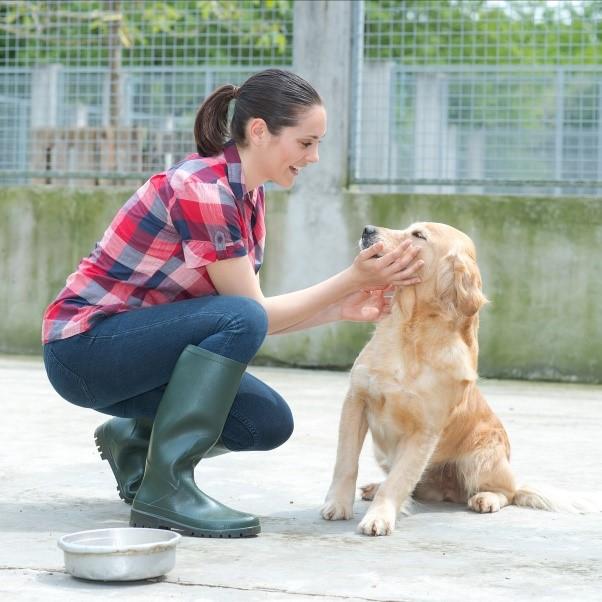
National Recognition of Veterinary Registration
The Western Australian government is working towards introducing Automatic Mutual Recognition from 1 July 2022. This will effectively mean National Recognition of Veterinary Registration (NRVR) will be available throughout all Australian States and Territories.
In summary, it will then be possible for a registered veterinarian in Australia to work in any other jurisdiction for a specific period without registering in that other jurisdiction. Under NRVR, all veterinarians are required to register in the jurisdiction of their principal place of residence (similar to a drivers licence).
Registration and requirements remain State and Territory based so please check with the local board prior to starting work.
Records
A veterinarian’s responsibilities in relation to veterinary and animal health records are covered in the Veterinary Practitioners Code of Professional Conduct (Code).
Writing and maintaining records
Under the Code (cl 15), a veterinarian must ensure that a detailed record of any consultation, procedure or treatment is made as soon as is practicable.

The record:
1. Must be legible and in sufficient detail to enable another veterinary practitioner to continue the treatment of the animal, and
2. Must include the results of any diagnostic tests, analysis and treatments
3. If a record is altered, the alteration must be clearly identified in the record as such
4. A veterinarian must ensure that all records of any consultation, procedure or treatment are retained for at least 3 years after they are made.
Client confidentiality
Under the Code (cl 12) a veterinarian must, except as otherwise required by the Code, maintain the confidentiality of information obtained in the course of his or her professional practice.
Provision of records
Under the Code (cl 10), a veterinarian who has previously treated an animal must, when requested to do so, and with the consent of the person responsible for the care of the animal, provide copies or originals of all relevant case history records directly to another veterinary practitioner who has taken over the treatment of the animal.
In all cases consent should be obtained from the client before releasing records relating to that client. The Board also recommends that permission is sought from the individual veterinarian, superintendent, or owner of the veterinary practice depending on circumstances prior to releasing animal health records.
‘A breath of fresh air’
exploring veterinary based barriers to BOAS treatment
We would greatly appreciate your participation in our online survey on brachycephalic obstructive airway syndrome (BOAS) and brachycephalic dog management which should take less than 10 minutes of your time.

The aim of this study is to assess general practitioner veterinarians understanding and perceptions of BOAS, the recommendations they make based on their understanding and perceptions of the disease and the unique challenges they face managing brachycephalic dogs over their lifetime.
• Establish existing knowledge & knowledge gaps
• Identify extrinsic factors influencing knowledge, attitudes & perceptions
• Identify veterinary barriers to patient treatment access
Please click on the following link to begin the survey or type the link below into your browser
When a specialist or other veterinarian has visited the practice to treat an animal it is likely, based on the above, that the practice would be the owner of the records however, it would be prudent and ethically appropriate to discuss this matter with the specialist or other veterinarian prior to any release.
Where the veterinarian holds the records of another practitioner provided pursuant to the Code (cl 10) the agreement of that practitioner should be sought prior to releasing the records.
When releasing records, veterinarians must also be mindful of the privacy interests of third parties whose personal information may be included in clinical records. For example, records may be held in one file for an individual animal with multiple clients over time, each client must provide consent for release of information pertaining to when that client was responsible for the care of the animal.
Before releasing records please also consider what other personal information these records hold. A person leaving or who has left a relationship may not wish their contact details to be inadvertently provided to the former partner.
Finally, the Code provides that veterinarians must at all times act with a primary concern for the welfare of animals. Even where there is no obligation to provide a copy of clinical records to a third party, it may be appropriate for the veterinarian to disclose, with consent from the client, information from the records that is necessary to facilitate the treatment and care of the animal.
https:// murdochuni.syd1.qualtrics.com/ jfe/form/SV_9TrxTDoy8FdDeT4
You can save your progress and return if needed.
More details are available from the survey information sheet.
Registration renewals
Registration renewals must be completed by 30 June 2022 for the registration period 1 July 2022 to 30 June 2023.

The registration fee is $320.
If you have not yet received your registration renewal notice by email please contact the Board
The easiest way to renew your registration is to use the Vet Login If you do not yet have a Vet Login click on the Forgotten your password link from the Vet Login page and details will be sent to your registered email address.
If you no longer have access to your registered email address please contact the Board
Problem submitting?
Please enter zero ‘0’ if you have not completed structured or unstructured CPD.
Ensure your work address includes ‘state’ details.
Confidentiality
This very important area of veterinary practice is sometimes poorly understood yet it underpins everything we do as professionals.
Confidentiality provides a significant foundation to the trust the public and our clients have in the veterinary profession.
Breaches of confidentiality may be subject to investigations by the Board and proceedings in the courts.
What does the veterinary practice legislation say about confidentiality?

The Veterinary Practice Act 2003 (Act) (s 55) states that:
(1) A veterinary practitioner must comply with a requirement under this Part to answer a question or to produce information or a document despite any duty of confidentiality in respect of a communication between the veterinary practitioner and a client (but only if the client is the complainant or consents to its disclosure).
(2) A veterinary practitioner may disclose a matter to the Board, a committee of the Board or the Tribunal in breach of any duty of confidentiality if the Board, committee or Tribunal is satisfied that it is necessary for the veterinary practitioner to do so to rebut an allegation in the complaint.
‘A requirement under this Part’ in paragraph (1) above refers to Part 5 of the Act, complaints and disciplinary proceedings.
In relation to a complaint investigation by the Board, if the client is the complainant, you must release records and other information to the Board when requested.
You may release records or disclose matters without client consent if it is necessary to do so to defend yourself against an allegation in a complaint.
The Veterinary Practice Regulation 2013 (Regulation) schedule 2 Veterinary Practitioners Code of Professional Conduct (Code), clause 12 states that:
A veterinary practitioner must maintain the confidentiality of information obtained in the course of professional practice, unless the disclosure of the information is
(a) authorised or required by this code of conduct or a law of this State or of the Commonwealth, or another State or Territory, or
(b) to an officer under the Prevention of Cruelty to Animals Act 1979 or an approved charitable organisation within the meaning of that Act and relates to an alleged offence under that Act or an alleged offence relating to animal cruelty under the Crimes Act 1900, or
(c) to the Greyhound Welfare and Integrity Commission under the Greyhound Racing Act 2017 and relates to an alleged offence under the Prevention of Cruelty to Animals Act 1979.
Clause 10 of this Code states that:
A veterinary practitioner who has previously treated an animal must, when requested to do so, and with the consent of the person responsible for the care of the animal, provide copies or originals of all relevant case history records directly to another veterinary practitioner who has taken over the treatment of the animal.
If another veterinarian requests the records for a patient that he or she is now caring for and has the consent of the person responsible for the care of that animal then you must release these records to that veterinarian.
The release of client information gained in the course of your professional activities in other circumstances is therefore likely to be viewed as a breach of client confidentiality under clause 12 of the Code. Exceptions however can be found from an examination of other legislation and circumstances below.
What about other legislation?
A subpoena is issued in connection with court proceedings and compels you to provide evidence. It specifies exactly what is required, nominates the court to which this must be delivered, and the date by which this information must be supplied.
If your medical records are included in a subpoena, the client has the right to appeal to the court against the release of these records. If you were to give the records to anyone else (e.g. police), you will deprive your client of that right.
If a court requires you to release specific client information you must do so.
The other area of law that requires veterinarians to release information gained during the course of their professional practice is in relation to notifiable diseases in NSW declared under the Biosecurity Act 2015
There is a legal obligation on veterinarians (and stock owners or managers) who know or suspect that an animal has a notifiable disease to notify the relevant authorities.
Finally, there are a few circumstances where you may but are not required to release client information such as medical records. For example:
• Releasing information to your legal, insurance or other professional advisor who is assisting you to defend an allegation before a court, tribunal or the Veterinary Practitioners Board. That advisor has a duty of confidentiality to you.
• Releasing records to your client but remember consent is specific and release records only for the period when your client was the person responsible for the care of the animal concerned.
• Release of records with the consent of the client to a client’s animal insurance provider.
• Release of records to a racing steward upon request and in relation to an investigation where the trainer or person responsible for the care of the horse has provided a signed consent for the release of these records to the racing authorities. It would be prudent before releasing such records to confirm this permission with the client and ensure that you release only the relevant record for that specific horse.
As previously discussed in this issue, medical records are the property either of the individual veterinarian or of the veterinary practice. Veterinarians working in a multi person practice should also seek permission from the practice superintendent before releasing medical records. It is worthy of noting that veterinary practice legislation refers to ‘client’ and ‘person responsible for the care of the animal’ and not ‘owner’ in these matters.
In summary, there are a few circumstances where you must release information you have obtained in the course of your professional practice and a few circumstances when you may release this information, but otherwise you must maintain the confidentiality of information obtained in the course of your professional practice.

If you are unsure about what to do when confronted with issues of confidentiality it is prudent to seek independent legal advice.
Licence renewals
Hospital licence renewals must be completed by 30 June 2022 for the registration period 1 July 2022 to 30 June 2023.
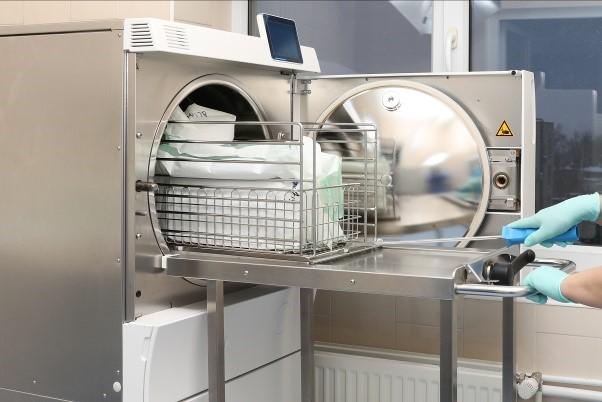
The licence fee is $370.
Renewal notices are generally sent to the licence holder(s) or an accounts contact provided to the Board.
In many cases the contact person is also the superintendent of the hospital.
If you have not yet received your hospital licence renewal notice by email please contact the Board
Similarly, if you are no longer the superintendent of a hospital please email the Board so the hospital record can be updated.
You can renew your licence either by using your Vet Login or by going to our payments page and entering your hospital licence number.
If you do not yet have a Vet Login click on the Forgotten your password link from the Vet Login page and details will be sent to your registered email address.
LSD summary
Lumpy skin disease (LSD) is a highly infectious viral disease that affects all breeds of cattle and water buffalo. It does not affect other types of livestock or humans.
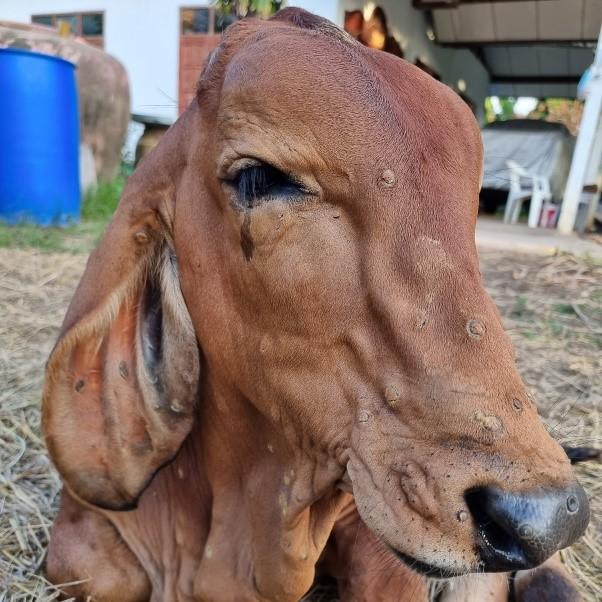
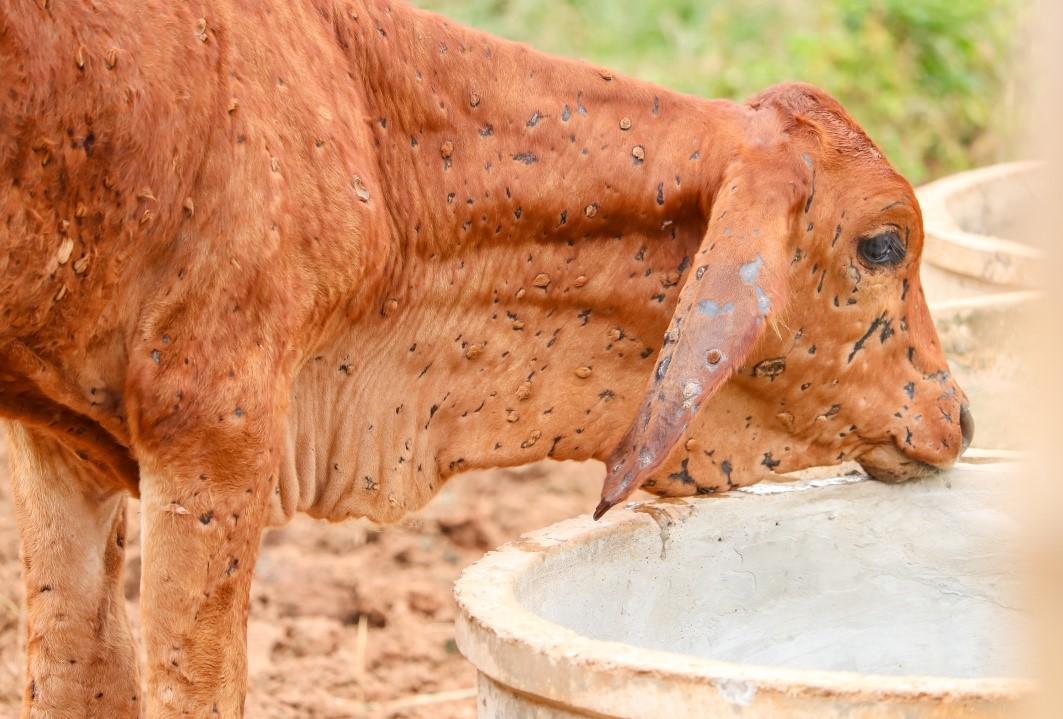
LSD is primarily spread by biting insects. It can also be spread through direct contact between animals via secretions and excretions. Contaminated feed, water, vehicles and iatrogenic means (for example, repeated use of needles on different animals) can all spread the disease.
In addition, LSD may be shed in semen and may be present in milk of infected animals.
Who do you call?
Lumpy skin disease is national notifiable disease which means an animal showing suspect signs of the disease must be reported to a
Local Land Services District Veterinarian (DV) on 1300 795 299 or the Emergency Animal Disease Watch Hotline on 1800 675 888.
Lumpy Skin Disease
Since the detection of Lumpy skin disease (LSD) in the Indonesian province of Riau in March 2022, the threat of the spread of the disease to Australia has increased significantly.
An incursion of LSD into this country would have severe negative animal welfare and economic implications along with substantial trade impacts.
The most likely pathway of entry for LSD would be from insect vectors carrying the pathogen, flying in, being blown in or transported in from Australia’s nearest northern neighbours.
Once here the disease would most likely establish in localities that are largely inaccessible and contain significant numbers of feral susceptible animals (e.g. buffalo, wild cattle), making response efforts logistically challenging.
Containment and eradication would also be difficult due to the wide distribution of many competent insect vectors.
The disease has a long incubation period and long distance dissemination of LSD into new areas by live animals may go unnoticed if transportation occurs when the animals are incubating the disease prior to showing any clinical signs.
The other issue is the current lack of access to a suitable vaccine for LSD in Australia.
National discussions to date have noted that vaccination would be the most effective control measure for an outbreak of LSD.
The Department of Agriculture, Water and Environment (DAWE) has set up a taskforce to deliver the National lumpy skin disease action plan. As part of this plan, they are progressing steps towards obtaining an emergency use permit for an LSD vaccine to use during an outbreak of LSD and allowing for the importation of live LSD virus to enable testing of overseas vaccine candidates and for future vaccine development.
NSW DPI is working with industry, AVA, state territory governments and the Commonwealth to support the National LSD action plan to optimise surveillance and preparation of this disease incursion.

NSW is currently exploring research on mRNA vaccine development jointly with Canada as part of the mRNA vaccine development facility initiative.
A multipronged, collaborative approach will be required to detect and response to LSD should in occur in Australia. Other strategies for disease control include culling infected animals, movement restrictions and vector control.
Key messaging for veterinarians when thinking about LSD
• Lumpy skin disease is a vector borne viral disease of cattle and buffalo, spread by insects such as biting flies and mosquitoes.
• It does not affect other types of livestock or humans. The meat of infected cattle is safe to eat. Australian meat processing standards mean no animals with signs of infectious disease enter the food chain.
• The most striking feature of the disease in cattle is the appearance of skin nodules. The skin nodules penetrate the full thickness of the skin and can vary in size from 0.5 to 7cm in diameter. They can number from only a few to many hundreds and may occur on any part of the body.
• Other signs of LSD include fever, lameness, nasal and ocular discharges and enlarged superficial lymph nodes.
• Feed intake may decrease and there can be a sudden drop in milk production in dairy cows.
• The disease may also cause abortions, and sterility in bulls.
Samples to collect when investigating suspect cases of LSD
• Scabs, swabs (including oral/nasal) in PBGS.
• Fresh and fixed skin samples.
• Blood both EDTA and clotted.
Transport
• Chill blood samples and unpreserved tissue samples with ice bricks.
Send samples with a detailed specimen advice form via courier to:
The NSW Animal and Plant Health Laboratories (APHL, formerly SVDL) Elizabeth Macarthur Agricultural Institute Woodbridge Road Menangle NSW 2568
Phone: 1800 675 623
And a final reminder that Lumpy skin disease is a notifiable disease and should be reported to the Emergency Animal Disease Hotline on 1800 675 888.
Bookmark the LSD webpage to keep up to date with the latest information https://www.dpi.nsw.gov.au/biosecurity/animal/info vets/lumpy skin disease
For more information: https://www.awe.gov.au/biosecurity trade/pests diseases weeds/animal/lumpy skin disease https://animalhealthaustralia.com.au/lumpy skin disease/
Possible Japanese Encephalitis Virus infection in NSW
NSW Department of Primary Industries has detected evidence of infection with Japanese encephalitis (JE) virus in horses from several Local Land Services regions across NSW (North Coast, Hunter, Greater Sydney, Central West, Riverina, and South East regions).
Horses contract JE and other flavivirus infections from being bitten by a mosquito carrying the virus.
Horses are dead end hosts; that is, they do not transmit the virus to other horses, animals, or people.
The clinical presentation of JE is similar to other mosquito borne diseases such as infection with West Nile/Kunjin virus and Murray Valley encephalitis virus.
It can also appear clinically like Hendra virus infection. As Hendra virus can be transmitted directly from horses to people, it is important to take appropriate personal protective precautions when assessing, sampling, and treating affected horses while waiting for test results.
If you suspect Japanese encephalitis in horses, contact the Emergency Animal Disease Watch Hotline on 1800 675 888 (24 hours).
Additional information is available from our website
Beware the stowaway—cane toad incursions rise in NSW
NSW Department of Primary Industries (DPI) is asking vets to help manage an increasing number of cane toad incursions by determining the sex and reproductive status of cane toads and reporting it to NSW DPI.
NSW DPI and Local Land Services (LLS) have responded to an increasing number of cane toad reports in NSW, including the biosecurity zone (see Figure 1). While there is no broadscale method to control the cane toad, maintaining awareness of the pest, reporting their presence and managing them responsibly when detected will help slow the spread and further establishment of cane toads in NSW.
The Cane Toad Biosecurity Zone covers all areas of NSW except a portion of the north east of the state where surveys indicate cane toads have established endemic populations.

Since the beginning of the year, confirmed reports have identified 28 individual toads. This has been attributed largely to community travel and the transport of goods around the state.
NSW DPI and LLS responded to a cane toad report in Kenthurst where a business continues to find toads on and around the property. LLS conducted surveys to catch as many toads as possible, but new toads keep arriving. So far, 27 toads have been collected from the area.
Samples have been taken from nearby dams to establish the presence or absence of toads in the area. None of the toads captured had reached sexual maturity, leading NSW DPI to believe they are not breeding and are stowaways from a supplier in Northern NSW.
This is not an isolated case and surveillance activities are being undertaken in several other parts of the state.
NSW DPI has recovered individual toads from West Wallsend, Rutherford, Coffs Harbour, Dubbo and Calala.
The University of Newcastle performed the post mortem on the toad recovered from a garage in West Wallsend on 14 April 2022. The results indicated a female gravid toad only a week away from laying up to 20,000 eggs. These post mortems assist by informing establishment risk assessments.
Griffith University has published this Narayan et al paper on sexing cane toads. Please see attached pictures (Figure 2) of a gravid female.

The cane toad management program would not be nearly as successful without the help of local government agencies, private vets and community members.
If you think you've seen a cane toad in the biosecurity zone, or receive one at your clinic, or see another unusual non native animal, report it using the NSW DPI online report form or if the animal is in front you call 1800 680 244.

Permits to control mosquitoes that spread Japanese Encephalitis
The farm chemicals group has been working with the incident management team and the national vector control group to ensure appropriate chemicals are available to control Culex mosquitoes (Culex tritaeniorhynchus) that vector Japanese Encephalitis Virus (JEV).
JEV is a disease spread by the Culex mosquito. The virus amplifies in wading birds and pigs to concentrations in the blood that can be spread by the mosquito. The virus can also infect humans, horses and donkeys, cattle, sheep, goats, water buffalo, chickens, and other animals, although levels in the blood of humans and these animals is not high enough for mosquitoes to spread the disease further.
The Australian Pesticides and Veterinary Medicines Authority (APVMA) has recently approved 4 permits allowing the use of chemicals to control culex mosquito larvae in water, and mosquitoes in pig sheds and surrounding vegetation and to repel mosquitoes to prevent them from biting and infecting pigs. A fifth permit is currently being assessed by the APVMA.
New Veterinary Permits
Permit No. Description
PER92249 Diethyltoluamide, Citronella Oil, Piperonyl Butoxide, Pyrethrins and N Octyl Bicycloheptene Dicarboximide / Pigs / Mosquito Vectors of Japanese Encephalitis
Issued date Expiry date
12 Apr 22 30 Apr 23
PER92185 Vetsense INSECTA Repellent Spray (N OCTYL BICYCLOHEPTENE DICARBOXIMIDE, PIPERONYL BUTOXIDE and PYRETHRINS) / Pigs / Mosquito 21 Mar 22 31 Mar 23
PER92173 EQUIVAC WNV (Inactivated West Nile Virus strain VM 2) / Equine / West Nile Virus 11 Mar 22 31 Mar 24
PER91757 Y TEX TRI ZAP Insecticidal Cattle Ear Tag (zeta cypermethrin, abamectin and piperonyl butoxide) / Beef cattle / Buffalo fly 4 Mar 22 31 Mar 23
PER91674
Custom Inactivated Glaesserella haemophilus and Custom Inactivated Actinobacillus pleuropneumoniae / Porcine / Glasser's Disease and Pleuropneumonia
28 Feb 22 28 Feb 25
PER91527
Observe Bovine Tuberculin and Observe Avian Tuberculin / Primates and Alpacas / Tuberculosis 1 Dec 21 31 Dec 23
PER91444 TBV Custom Moraxella Vaccine / Various animals / Moraxella 12 Apr 22 30 Apr 25
PER91370
PER90975
Custom Inactivated Autogenous Vaccine / Ruminants / Mycoplasma species 23 Mar 22 31 Mar 25
F10SC Veterinary Disinfectant / Hard Surfaces, Equipment and Fabric / Various Diseases 20 Apr 22 30 Apr 25
PER90837 BRAVECTO 1000 MG FLURALANER SPOT ON SOLUTION FOR LARGE DOGS and Common or Bare Nose Wombat / Sarcoptic mange
PER90452
PER90304
Prepared by Jenene Kidston
2 Mar 22 31 Mar 23
Coopers Strike / Murray Cod, Golden Perch / Anchor Worm 23 Nov 21 30 Nov 23
Apivar / European Honey Bee Colonies / Varroa Mite 8 Mar 22 31 Mar 25
Biosecurity and Food Safety NSW Department of Primary Industries
Email: jenene.kidston@dpi.nsw.gov.au or phone 0429 793 085
Adverse Experience Reporting Program
The Adverse Experience Reporting Program (AERP) is a post registration program that assesses reports of adverse experiences associated with the use of a registered chemical product (or those on permit).
An adverse experience is an unintended or unexpected outcome associated with the registered use of a product when used according to the approved label instructions.
This includes impacts on human beings, animals, crops and the environment or a lack of efficacy.
Anyone can report a problem with a chemical product.
Holders are required to report relevant information to the APVMA, in accordance with the legislation.
The AERP is not intended to replace a consumer’s right or responsibility to complain to the registration holder or manufacturer about an adverse experience involving an agricultural or veterinary chemical product.
Reports of adverse experiences are closely monitored by the APVMA.
It is vital to record, assess and classify adverse experiences to detect uncommon events not evident during the initial registration process of a product.
Recall of veterinary products
The APVMA is responsible for the recall of veterinary medicines from the market. Participation in a recall, whether it’s initiated by the manufacturer or the APVMA, is mandatory.

There are a number of reasons why a product (or a particular batch) may be recalled, those most relevant to practicing veterinarians include:
• Risks to safety
• Lack of efficacy
• The product is unregistered
• Labelling or manufacturing errors.
The majority of recalls are initiated and managed by the manufacturer. However, in certain situations the APVMA may compulsorily require the recall of a product.
The easiest way to be kept informed of recalls is to subscribe to the APVMA’s listing of recalls notices.
To be notified of recalls via email, veterinarians are invited to complete a subscription form and select ‘recall notices.’
Any queries or comments regarding a particular recall or stop supply notice can be submitted directly to recalls@apvma.gov.au
Registration of veterinary chemicals
Australian law requires all agricultural and veterinary chemical products sold in Australia to be registered by the Australian Pesticides and Veterinary Medicines Authority (APVMA). Products assessed must meet safety, trade, efficacy and labelling criteria.

Once a product is registered, it is approved for the purposes and uses stated on the product’s label.
Limited use of an unregistered chemical may also be allowed by permit.
Veterinarians are also able to supply and use products for animal treatment not registered by the APVMA but registered for human use by the Therapeutic Goods Administration (TGA) and unregistered products in animals generally but only in prescribed circumstances under the Stock Medicines Act (1989) (s 38). This legislation also allows a veterinarian to use a registered product contrary to use instructions (off label) in prescribed circumstances.
Unregistered products include substances or a mixture of substances prepared by a pharmacist under the instruction of a veterinarian (compounded medications) and substances or a mixture of substances prepared by the veterinarian in the course of the practice of his or her profession.
Registered products and products with a permit for use may be found by searching the PubCRIS database and the Permits database available from the APVMA website
Pet Registry NSW
In NSW, all cats and dogs, other than those exempt, must be microchipped by 12 weeks of age or before being sold or given away, whichever happens first. Only authorised microchip implanters and veterinarians are permitted to microchip pets with an ISO compliant microchip (15 digits).
In NSW all cats and dogs must be registered by six months of age. Registration is a one off payment for the pet’s lifetime, regardless of change of ownership. Penalties may apply for failing to register a cat or dog.
The NSW Pet Registry is the only official online system in NSW for registering a cat or dog and allows dog and cat owners to create an online profile and:

• Update their contact details
• Change the ownership of pets
• Report their pet missing or deceased
• Pay most lifetime registration fees
• Add a litter
Getting Access to the Pet Registry as a Vet
Council staff, veterinarians registered with the Board, Authorised Identifiers and Registration Agents can be authorised to access the Registry. To do this you require a unique Authorised Identifier Number (this is not your Board registration number!).
If you are a vet, email pets@olg.nsw.gov.au, and request the one page application form be forwarded to you with the Guideline for Authorised Identifiers. Complete the application form advising your full name, your vet practice contact details, your personal contact details and your Veterinary Practitioners Board of NSW number and return to pets@olg.nsw.gov.au
If you are not a vet, you must have successfully completed a training course run by TAFE NSW, RSPCA NSW, Animal Welfare League or other training provider authorised by the Office of Local Government, enabling you to lawfully implant microchips in cats and dogs in NSW.
Updating the NSW Pet Registry
The NSW Pet Registry allows vets to create an online profile and:
• Enter microchip details (within 48 hours of implantation)
• Search for a pet
• Update a pet as Home, Missing or Deceased
• Update desex status of a pet
• Create, add, update and remove offspring of a litter
• Search for information about registered Breeders and Rehoming Organisations
• Report lost and found dogs and cats

Please ensure when microchipping:
• Microchip numbers are entered correctly into the system (15 digits)
• Details of the owner’s LEGAL name e.g., FIRST and LAST name only
• The animal’s species, breed, date of birth, gender, colour and address usually kept at are accurately entered
• Unique Breeder Identification Number is added for existing or new breeders microchipping a litter
Entry of incorrect information could be the difference between a lost animal being reunited with its owner.
Upcoming training in the NSW Pet Registry for vets and authorised identifiers
Step by step instructions on using the NSW Pet Registry as a vet or authorised identifier are available from the NSW Pet Registry website
Upcoming training in the NSW Pet Registry for Vets and Authorised Identifiers
The Office of Local Government are holding a webinar online to give an overview to Vets and Authorised Identifiers on using the NSW Pet Register in their role, and tips on how to resolve common issues that are experienced by vets and vet practitioners in using the NSW Pet Registry.
Date: Wednesday 29 June, 2022 Time: 1 2pm
Register by emailing pets@olg.nsw.gov.au with the number of participants, your business name and email and suburb.
For more information about microchipping and registering cats and dogs in NSW, please visit www.olg.nsw.gov.au
Veterinary Practitioners Board
The object of the Veterinary Practice Act 2003 is to regulate the provision of veterinary services in NSW to promote animal welfare and protect the public.
Board members:
Steven Ferguson (President)
Peter Alexander
Magdoline Awad
Georgina Child
Sarah Hunter
Paul McGreevy
Kate Mills
Lisa Minogue
Veterinary Practitioners Board
Suite 7.09, 247 Coward St
Mascot NSW 2020
President’s Report (cont’d)
Clear well documented communication setting out expectations at the beginning of any client interaction is your best defence to mitigate any complaint.
The Board has a process of recommending that any potential complainant first contacts the hospital superintendent to discuss their concerns before lodging a formal complaint. Internal dispute resolution procedures can go a long way to resolving client concerns.
With the high demand on our services, veterinarians cannot be always everywhere. Under the Veterinary Practitioners Code of Professional Conduct, a veterinary practitioner must, when accepting an animal for diagnosis or treatment, ensure that they are available for the ongoing care of the animal, or, if not, make arrangements for another veterinary practitioner to take over the care of the animal.
Most city and larger regional areas now have access to 24 hour emergency facilities for small animals and have arrangements in place to ensure ongoing care outside of practice hours. Formal agreement and arrangements must be in place before diverting phones or leaving a message to contact another practice for provision of out of hours care.
When taking over the care of an animal it is important to realise the situation has often changed since the patient was last seen by the original veterinarian. If concerns are raised by a client about previous care remember the clinical situation may have evolved and become clearer, the animal may have been presented by different carers and there can be misunderstandings in what was said and done.
With the client’s permission it is best to request clinical records from the previous treating veterinarians. Concerns about previous care should initially be discussed with the original treating veterinarian directly.
Statements like, “I wouldn’t have done that” can lead to complaints and are better worded as “I have the benefit of the response to previous tests and treatments and now recommend this”. As a profession, collegiality, supporting and working collaboratively with your peers makes us all stronger.
T: +61 8338 1177
E: admin@vpb.nsw.gov.au
W: www.vpb.nsw.gov.au
The information contained in this newsletter reflects the policies of the Veterinary Practitioners Board (Board) and the current NSW legislation.
Any advice on specific issues not relating to Board policy should be obtained from either the AVA or appropriate government department or your own legal advisors.
Make the most of our post COVID freedom and catch up with colleagues at local events, have a chat about sharing the afterhours load and support your colleagues when dealing with more challenging cases and clients.
Back to p. 1
